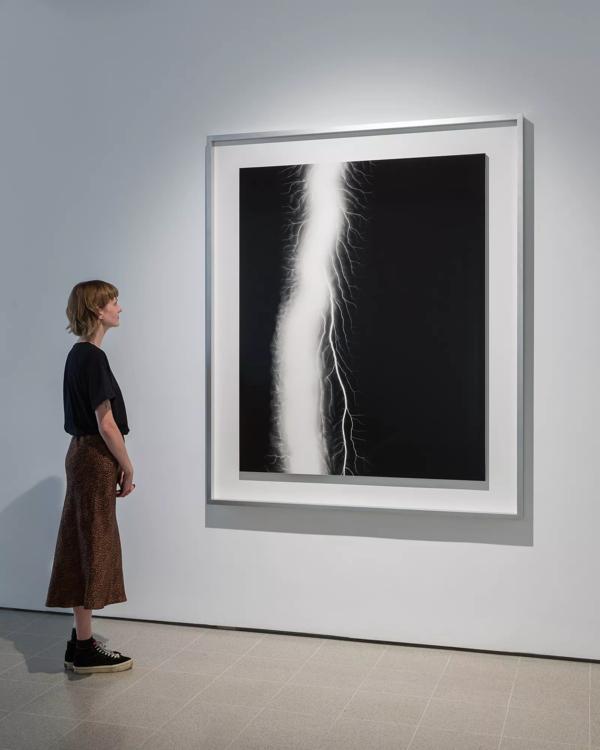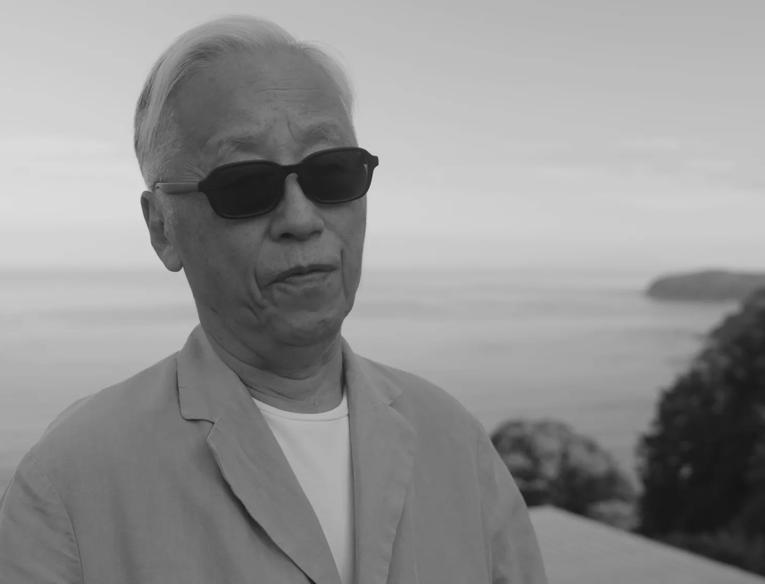5 things to know about Hiroshi Sugimoto at Hayward Gallery

From October 2023 until January 2024, the Hayward Gallery presented the largest survey to date of photographer Hiroshi Sugimoto.
Renowned for creating thought-provoking and quietly subversive images, the Tokyo-born artist has spent five decades exploring the possibilities of photography to international acclaim.
As we got ready to present an exhibition that spanned the breadth of the artist’s creativity, we shared these five things you need to know about Hiroshi Sugimoto at Hayward Gallery.
Sugimoto is able to bring the dead back to life
‘My life as an artist began the moment I saw that I had succeeded in bringing the bear back to life on film,’ said Sugimoto about his 1976 work Polar Bear. The image is of an Arctic diorama in the American Museum of Natural History in New York, but through clever use of framing and exposure, Sugimoto was able to make the scene appear real. As well as revisiting the museum, and others across the US, to expand his Diorama series, Sugimoto later took a similar approach to the waxworks of Madame Tussauds in his Portraits. By removing the figures from their staged displays, and photographing them against a black backdrop with sympathetic lighting, the artist gave the impression that these famous faces had themselves modelled for his portraiture.

He also likes to play with our understanding of time
Our natural disposition is to think of photographs as snapshots, the capture of a fleeting moment. However, Sugimoto has frequently toyed with this understanding, producing images which instead condense time into a singular frame, an approach best demonstrated through Theaters.
This series began in 1976 when Sugimoto set up his camera in the back of a New York cinema,with its exposure time set to match the length of the feature film. The resulting photograph compressed the entirety of the film into a single image of a glowing white screen. ‘To watch a two-hour movie is simply to look at 172,800 photographic afterimages. I wanted to photograph a movie, with all its appearance of life and motion, in order to stop it again,’ said Sugimoto of the project. He has since revisited the approach across US Drive-Ins (1993), European Opera House (2014) and Abandoned Theaters (2015).
This is your first chance to see Sugimoto’s Opticks in the UK
In 2009, Sugimoto was gifted a batch of colour Polaroid film to see how a photographer who worked primarily in black and white might use it. This proved to be one of the last batches of the film ever produced (Polaroid went out of business in that same year) and would eventually find use in Sugimoto’s 2018 series, Opticks.
The images in Opticks – Sugimoto’s newest series, which has yet to be featured in any surveys of the artist’s work – are inspired by Isaac Newton’s seminal 1704 work of the same name, in which he presented proof that natural light was not purely white. Taking his cue from Newton’s experiments with prisms, Sugimoto used the Polaroid, along with glass and a mirror, to create condensed yet vivid compositions of colour in its purest form, before later enlarging these works into chromogenic prints.

Sugimoto has an interest in early photographic and scientific experimentation
Opticks isn’t the only series in which Sugimoto has experimented with historic techniques. In his 2006 series Lightning Fields, informed by the work of 19th century photography pioneer Henry Fox Talbot, Sugimoto captured the lightning-like shapes of electrical currents as they passed across a negatively-charged metal plate.
In his commitment to historic approaches the artist had initially attempted to supply the current to the plates using a hand-operated 18th century Wimshurst Electrostatic Machine, before switching to a more consistent Van de Graaff Generator.
Sugimoto is also a practising architect
Though best known as a photographer, Sugimoto has more recently added architecture, sculpture and set design to his multidisciplinary approach. In 2008 he established his own architecture firm, co-founding New Material Research Lab with the architect Tomoyuki Sakakida. A self-confessed ‘unlicensed architect’ (‘most of my ideas are illegal’ he told the New York Times in 2017), Sugimoto works with Sakakida and other qualified architects to realise his visions.
Heavily influenced by traditional Japanese architecture, his projects to date include Christie’s Tokyo Office, the renovation of MOA Museum in Shizuoka, and the revitalization of the lobby and sculpture garden for the Hirshhorn Museum in Washington DC. In 2017 Sugimoto’s Enoura Observatory, nestled against the outer rim of Japan’s Hakone Mountains, opened to the public. Conceived as a forum for disseminating art and culture, it can be experienced via Sugimoto’s film Garden of Time: Enoura Observatory, which can be seen in the Dan Graham Pavilion during our exhibition.

See the the largest survey to date of Hiroshi Sugimoto’s work at Hayward Gallery from 11 October 2023 to 7 January 2024.
Lead image: Installation view of Hiroshi Sugimoto, Sea of Buddha. Gelatin silver prints. Photo: Mark Blower. Courtesy the artist and the Hayward Gallery

From internationally acclaimed artists at Hayward Gallery, to pop-up installations, enjoy inspirational art and exhibitions with us.




